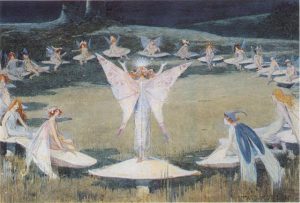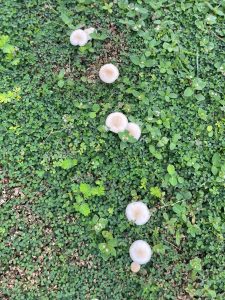
Tales of fairies and magical creatures are the lighthearted fare of children’s stories and movies these days. But most of our fables and fairy tales had a rather ominous origin. The sing-along “Ring Around the Rosy,” for example, was actually about people dying of the bubonic plague. Hansel and Gretel arose from the Great Famine in the 1300’s, when European families were rumored to resort to cannibalism rather than starve. Similarly creepy stories were spread about the “fairy rings” left overnight in yards. When ancient Celtic people awoke to see a circle of mushrooms emerging from the ground outside their doors, lore had it that this marked where fairies and elves had danced overnight. In a markedly non-Disney turn, people were warned never to step foot inside the ring of fungi lest they be cursed to a life trapped by the fairies, forced to dance inside the circle until they went crazy or died from exhaustion. The warnings may have unwittingly served their purpose, though; some of the mushroom species that commonly form fairy rings (Chlorophyllum spp.) contain deadly toxins.

While we now understand the science, the emergence of these “fairy rings” feels no less magical to the modern eye. With all the rain we have (finally) gotten this month, mushrooms are popping up everywhere. Being decomposers, mushrooms customarily cluster around concentrations of dead wood. Often, the remaining roots of a dead or cut tree will rot below ground for years, providing ideal fodder for mushrooms.

There are three types of fairy rings; Types I and II form circles of either dead (Type I) or lush (Type II) grass but no mushrooms. Type III produces the fairy rings encircled by mushrooms. The fungi sprout underground, then send their spores out in a circular, wagon-wheel pattern via tubelike threads called mycelium. The visible portion of the fungus—the mushroom fruiting body—appears at the outer edge of the circle.
Sometimes the inner portion of a fairy ring may decompose the grass in the center, although I don’t see that terribly often. While fungicides can be applied, most experts do not recommend them and consider them ineffective. Mushrooms will typically disappear on their own, but you can accelerate their removal if they’re problematic. Best practices include hand-removing (wearing gloves!) the mushrooms or aerating the lawn in the affected area to remove dead material.
 6
6
